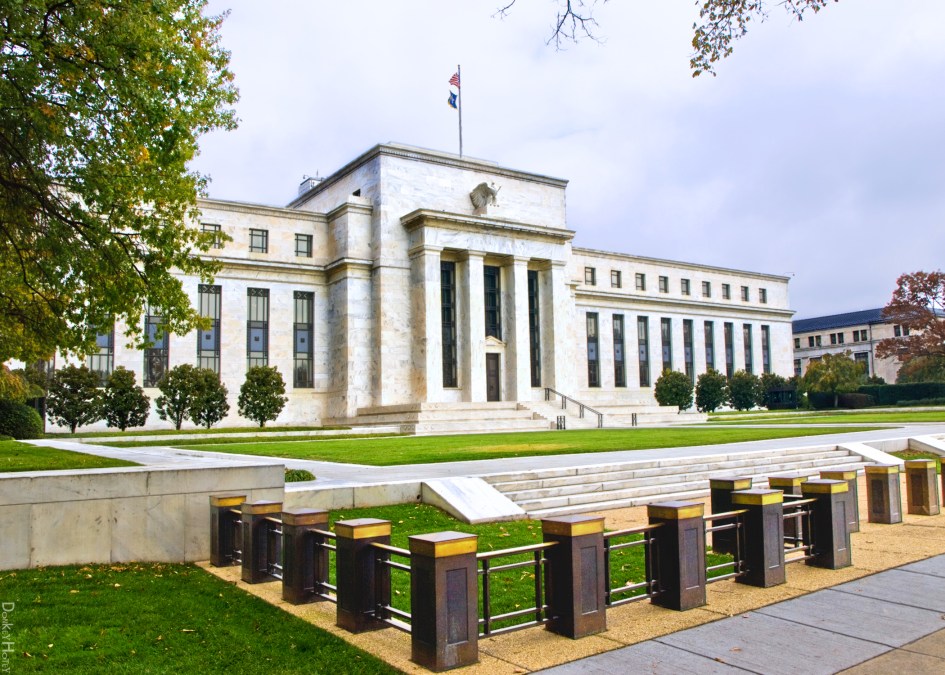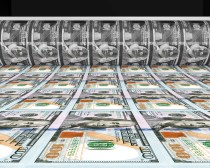Central banks urged to use blockchain for digital cash

Central banks around the world are exploring possible uses of blockchain and the U.S. Federal Reserve will put the dollar’s status as the global reserve currency at risk if it falls behind in the race to adopt the new distributed ledger technology.
That’s the takeaway from interviews with blockchain advocates who briefed global bankers at the International Monetary Fund’s Annual Meetings in Washington last week — and the speech delivered there Friday by Federal Reserve Board Gov. Lael Brainard.
Adopting a notably more enthusiastic tone than in previous remarks on the subject, Brainard opened her speech with a statement about the revolutionary power of blockchain — which uses distributed computing and cryptography to create an unforgeable and unassailably accurate record of a series of transactions.
The Federal Reserve Board “recognize the potential of distributed ledger technology, or blockchain, to transform the way financial market participants transfer, store, and maintain ownership records of digitized assets,” Brainard said, adding that “this may represent the most significant development in many years” for the banking sector.
Over the past few months, the central banks of Britain and Canada have joined Singapore in announcing they are studying possible uses of blockchain — though all three stress that an actual digital version of the national currency is, in the words of Bank of England Governor Mark Carney, “still some way off.”
But in addition to issuing national currencies central banks play two other key roles — providing or presiding over a settlement system; and regulating financial institutions like banks. It’s in these roles that some central banks are about to unleash the transformative power of blockchain.
Next generation settlement
The Bank of England, for instance, has developed a proof of concept blockchain for use in its next generation settlement machinery.
Blockchain creates a record, at regular intervals, of all the transactions that have taken place since the last record was created. But here’s the clever part: Part of that record is a cryptographic hash of the previous record, indissolubly joining the accurate version of the current record to its entire history — and making forgery impossible.
That means blockchain can radically simplify the complex business of interbank settlement — when banks have to pay each other’s bills.
Blockchain transactions are settled in real time, reducing what bankers call “counterparty risk” — what the rest of us know as the chance you won’t get paid.
In his major annual policy speech slated for June 16, Carney unveiled the proof of concept settlement blockchain, while cautioning that the technology still needed to prove its scalability, reliability and integrity before being implemented
“We won’t beta test RTGS,” Carney said, referring to the Real-Time Gross Settlement interbank payments system his bank runs.
The speech was never actually delivered because of the murder that day of a British MP and although the text was released the next day, it went largely unreported as a result.
“The Bank of England has been very progressive” on the blockchain, Perianne Boring of the Chamber of Digital Commerce told CyberScoop.
She added that the Bank of Canada had “also been very proactive.”
Regulatory sandboxes
Last year, the Monetary Authority of Singapore — the central bank of the island city-state — declared its intention to make its banking the global leader in innovative financial services technology known as fintech, including the blockchain.
At the heart of this strategy was a hands-off approach to regulating experiments with new technologies. This year, MAS outlined its regulatory “sandbox” approach. Banks and other regulated financial entities wouldn’t be required to get MAS approval in advance of any experiments with new technologies — essentially leaving it up to the banks’ own managers to assess the risks involved at the early stages.
“Sometimes,” MAS Managing Director announced in April, “as Nike puts it, you have to just do it.”
“Singapore has been very proactive in reaching out to the private sector,” said Boring.
Yhe benefits of that approach are being recognized elsewhere.
Over the summer, Australia’s financial regulator, the Australian Securities and Investments Commission, inked a deal with MAS whereby each would give preferential treatment for licensing purposes to companies already certified by the other.
A digital dollar?
But if central banks are eagerly exploring how blockchain can help them in their roles as regulators and guarantors of settlement, they are — perhaps especially in the U.S. — showing less interest in the possibility of issuing version of their own national currencies.
“We need to move forward and create a digital dollar,” consultant and author Don Tapscott told CyberScoop. He briefed the IMF at their annual gathering, telling them “When you can have digital cash, all kinds of wonderful things follow for the economy.”
He cited a Bank of England study that suggested eliminating just 30 percent of the friction in the payments system would boost the GDP by three percent.
Tapscott’s presentation outlined in detail other benefits of a digital currency based on a public blockchain:
- Real time information about the impact of money supply policy; and
- Transparency about cash flows.
Tapscott believes that digital currencies are just one possible use for blockchain, which he sees as the basis for a second internet. This internet, the internet of value, will upend finance as profoundly as the first internet — of information — revolutionized the news business.
He says that a technological revolution could bring the benefits of digital payments to two billion people who currently don’t have bank accounts.
Security concerns
But the U.S Federal Reserve remains cautious.
Across town, in her speech at the associated Institute of International Finance meeting, Brainard raised important questions about the security of blockchain, whose “distributed nature … combined with the fact that many connected participants can update the shared ledger, means that endpoint security is another critical component of any successful implementation.”
Hackers “that can take over a participant’s access to the ledger remain a key security concern, as thefts of cryptographic keys in Bitcoin continue to demonstrate,” she noted.
Blockchain implementations, she stressed, needed to comply with regulators’ requirements. Fortunately, “Some of the new technologies would potentially allow authorized access to certain data records in a much more efficient manner than has previously been possible,” she said.
For example, distributed ledgers could be built to require identity information which would permanently link an individual to a particular digital cash transaction.
She also mentioned the utility of an assured record for companies seeking to maximize their resiliency. “Some financial institutions have also begun to consider using distributed ledgers to back up critical databases and enable quick recovery from potentially virulent cyberattacks. We will be interested in whether such techniques can make new contributions,” she said.
Different approaches
“Different central banks are approaching the issue differently,” said Boring. The Federal Reserve “hasn’t been as progressive,” as Singapore, Britain, and Canada, she added.
“Why would we change a system in which we’re number one?” she asked.
“There’s a very important global movement underway,” she answered — referring to the blockchain — “and whoever moves first will get that first-mover advantage.”
“It comes down to leadership,” added Tapscott, “The leaders of the old paradigm always have trouble embracing the new paradigm, that’s how paradigms operate.”
Federal Reserve Chairwoman Janet Yellen “has urged central bankers to learn everything they can about distributed ledgers,” said Boring. “She understands how important this is to the economy.”
“If we want to stay the world’s reserve currency … if we want to stay number one,” she said, the Federal Reserve needed “to think strategically about this,” Boring concluded.




